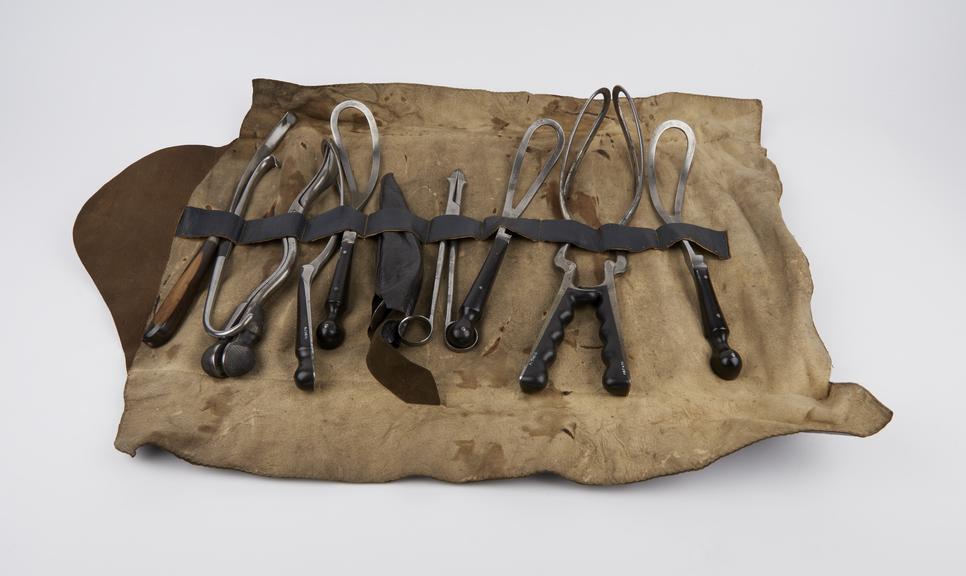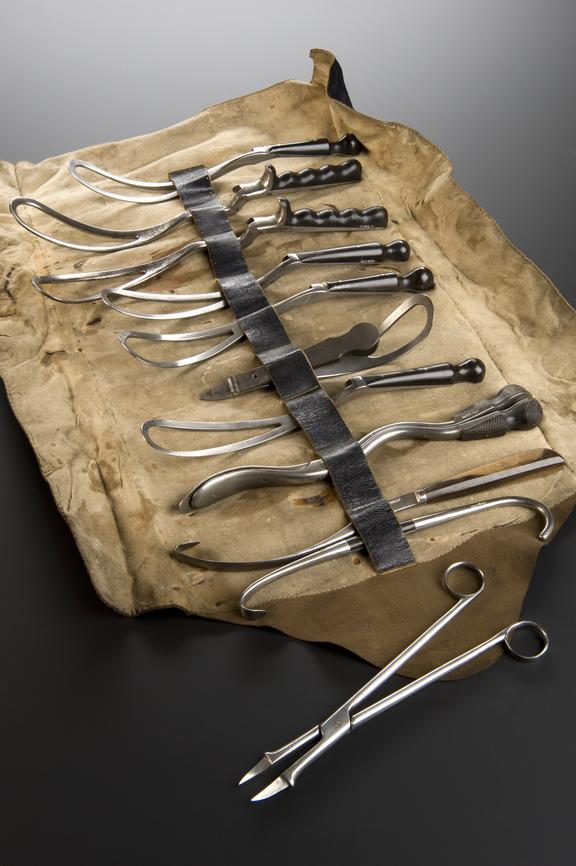Obstetric forceps
Obstetric forceps, Anderson, steel and ebony, by J. W. Wood, 81 Church Street, Liverpool, England, 1864-1900.


Obstetric instrument set, in leather roll, British, late 19th century
Tools in this obstetrical surgical instrument set include three sets of forceps for gripping the baby’s head and a vectis. A vectis was a levering instrument used to ease the head out. There are also destructive tools for removing a dead and obstructed foetus. A perforator pierced the child’s skull; two hooked instruments called crochets were inserted into the mother’s birth canal and hooked onto part of the child; and a pair of craniotomy forceps was a heavy toothed or ridged crushing instrument for breaking up the skull bones of a foetus.
Devices and tools were used for different applications depending on the circumstance. An obstetric physician, or male midwife, was not normally present in routine births in the 1800s. However, he was called to assist if complications arose.
Obstetric forceps, Anderson, steel and ebony, by J. W. Wood, 81 Church Street, Liverpool, England, 1864-1900.
Obstetric forceps, Blundell, steel and ebony, by Blackwell of London, 1817 to 1850
Obstetric forceps, steel and ebony, Robertson, by Elliott of Clitheroe, 1824 to 1858
Vectis, steel and ebony, by Blackwell of London, 1817 to 1850
Crochet, steel and ebony
Perforator, Denman, steel
Craniotomy forceps, Conquest, steel and ebony, by Weiss of London

